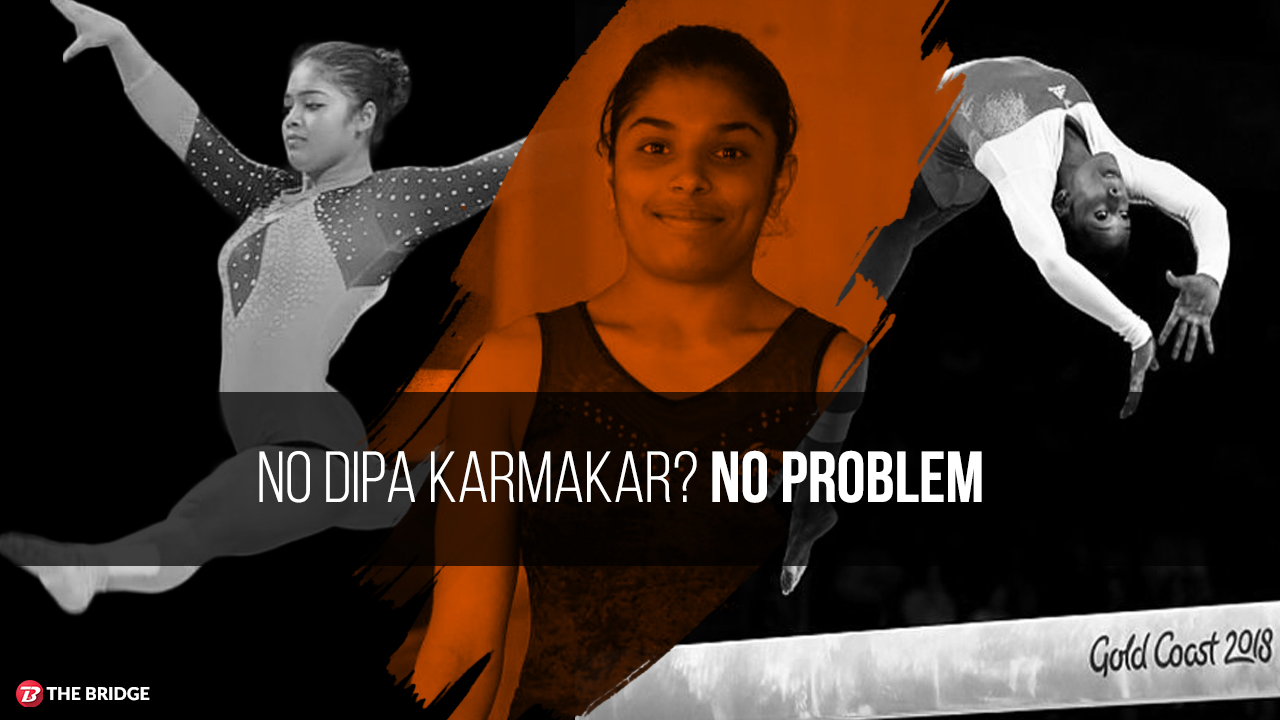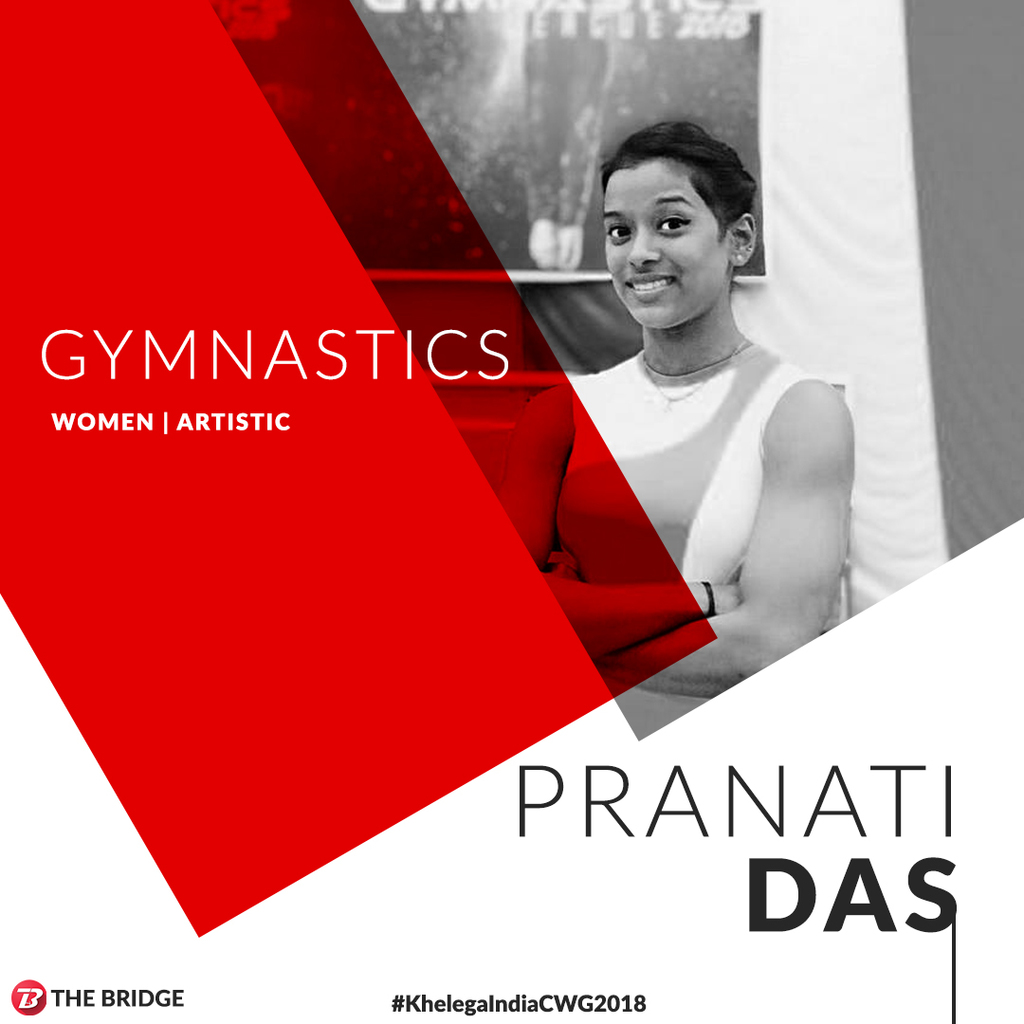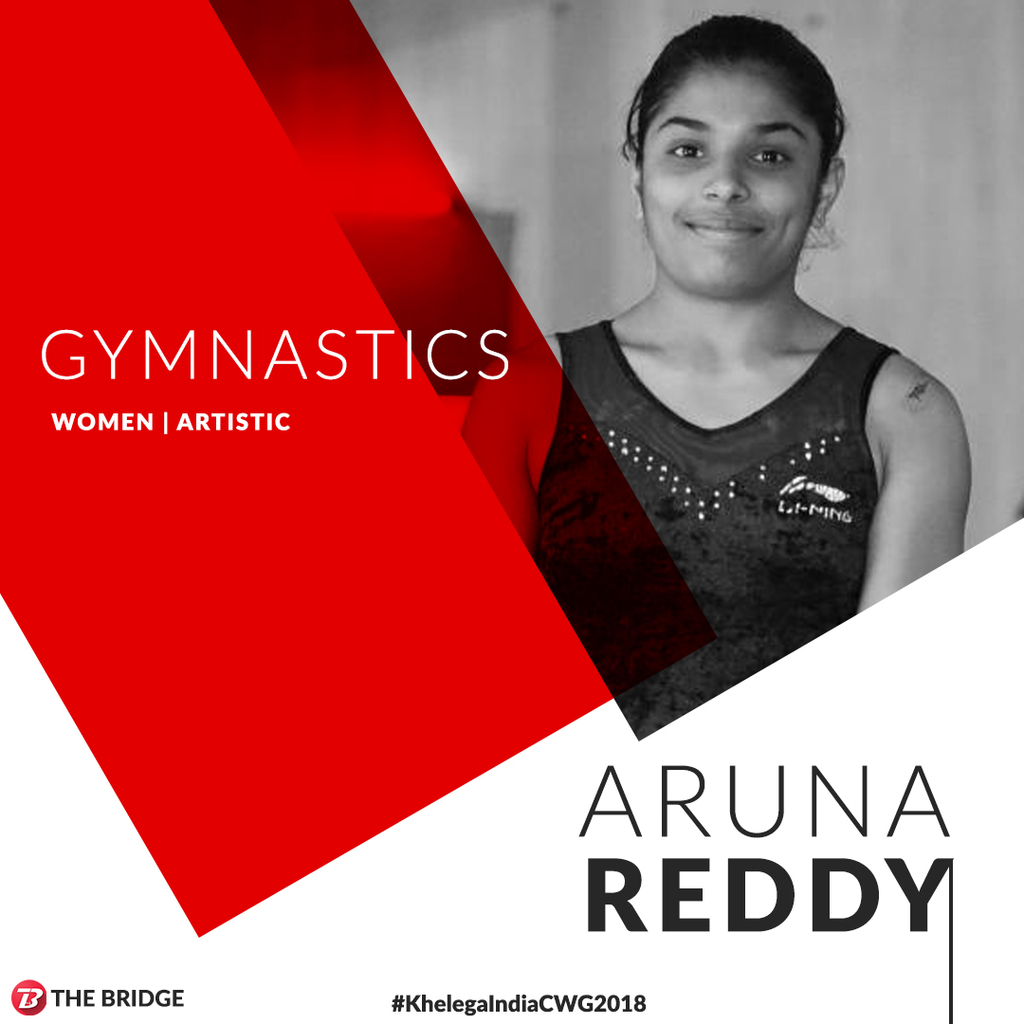Begin typing your search above and press return to search.
Commonwealth Games
In a league of their own: Inspired by Dipa Karmakar, India's Commonwealth gymnasts are scripting a path yet unseen in the sport

It is Dipa Karmakar's unique prerogative to lead any discussion on women in Indian gymnastics. On August 15, 2016, Dipa had walked onto the Olympics mat with her death vault which made the whole country sit up and take note. While the girls from teams like the USA, Canada, Russia, China and Japan celebrated wins and shared defeat with a slew of support staff, coaches and team members, Dipa and coach Bisweswar Nandi were alone ' their isolating journey to an Olympic berth highlighting the fact that no other Indian had gone where they had. It has been a year and a half since an Indian gymnast ranked fourth in an Olympics apparatus and at the Gold Coast Commonwealth Games, we now see a hint of what could soon be a full-fledged, five-member Indian gymnastics team. India, for the first time, had three of its gymnasts ' its whole contingent ' competing in the finals of an international Games and what makes the journey of Aruna Reddy, Pranati Nayak and Pranati Das a signifier of the brighter prospects to come is the fact that they closely follow Dipa's method of scientific domination of the sport but add their own ambitions to it. https://twitter.com/TheBridge_IN/status/982577853169418240 With her Produnova, which can give you the highest difficulty score of 7 in a vault, Dipa unfurled the dream of a new, points-crunching and ruthless approach towards gymnastics. In this, strengths are capitalised to the extent where the most can be made of a pre-determined set of points. In each of the four apparatus that make up a gymnast's day in a competition ' the vault, the floor, the balance beam and the uneven bars ' points are awarded on the basis of two parameters, difficulty and execution. Each twist, each salto, each somersault and layout contributes to a pre-assigned difficulty rating in the International Federation of Gymnastic's Code of Points. If you attempt a given move, you receive the difficulty points associated with it, no matter how badly you do it. This means that when a gymnast enters the arena, she already knows her difficulty score. She must now aim for an execution score that does it justice. Dipa's method of aiming for a stellar difficulty rating to minimise on execution failures is a clean fit for a sportsperson of prodigious talent in a single apparatus, but does it help in building well-rounded athletes who can shine in team efforts? This seems to be the question that the Olympian's slightly younger comrades are bent upon answering in the Gold Coast games, where Indian gymnasts have largely tried to broaden athletic horizons. Pranati Nayak, who at 22 years, is already a vault specialist, has qualified for the women's vault finals on April 8. At the 2018 Melbourne World Cup, Nayak performed the seldom-seen Kasamatsu vault. Her execution fumbled, but there were echoes of a performer who knew the science of the sport and was keen on capitalising on execution.  Her namesake from the same state of Bengal, Pranati Das, qualified for the individual all-around finals, where in spite of a dismal 12.900, 10.050 and 9.900 in the vault, uneven bars and beams respectively, she scored an astounding 11.050 in the floor routine. The floor ' especially cumbersome with its demands on the athlete to put on a veritable show ' had hitherto been the exclusive territory of the West. Das's floor score is echoed and bettered by World Cup bronze-medallist Aruna Budda Reddy, who like Das scored low (13.650, 10.200 and 9.000) in the vault, bars and beam, only to take the floor exercise by storm with an 11.550 score there.
Her namesake from the same state of Bengal, Pranati Das, qualified for the individual all-around finals, where in spite of a dismal 12.900, 10.050 and 9.900 in the vault, uneven bars and beams respectively, she scored an astounding 11.050 in the floor routine. The floor ' especially cumbersome with its demands on the athlete to put on a veritable show ' had hitherto been the exclusive territory of the West. Das's floor score is echoed and bettered by World Cup bronze-medallist Aruna Budda Reddy, who like Das scored low (13.650, 10.200 and 9.000) in the vault, bars and beam, only to take the floor exercise by storm with an 11.550 score there.  Das ultimately ranked 16th among the 18 women in the finals and Aruna ' a surprise reserve qualifier who could compete in the finals only due to another competitor's withdrawal ' came 14th. India's gymnastics journey held yet another sweet surprise this time -- one of the execution judges of the floor routine on April 7 was an Indian, Deepak Kabra. In the individual qualifiers at the Commonwealth Games, which double as the team all-around finals, the three gave India a combined score of 128.975. It brushed the bottom of the table, with only Sri Lanka after India, but it also revealed something important ' all three had chosen routines with lower difficulty points and higher execution values. In fact, the highest difficulty point attempted by any of the three was a 4.8 in Nayak's vault ' a whole 2.2 points below Dipa's 7-pointer Produnova. The execution board is one which gymnasts from lesser countries steer clear of, until now. Flawless execution, one may argue, is at the very heart of a visual sport like artistic gymnastics. The girls are driven by Dipa's influence but in their dogged determination to crack the perfect execution, to present a beautiful picture, sets them apart and in a league of their own. So what gives India's Commonwealth gymnasts the courage to aim for execution-driven excellence in a field where other nations can do exactly that and even better?
Das ultimately ranked 16th among the 18 women in the finals and Aruna ' a surprise reserve qualifier who could compete in the finals only due to another competitor's withdrawal ' came 14th. India's gymnastics journey held yet another sweet surprise this time -- one of the execution judges of the floor routine on April 7 was an Indian, Deepak Kabra. In the individual qualifiers at the Commonwealth Games, which double as the team all-around finals, the three gave India a combined score of 128.975. It brushed the bottom of the table, with only Sri Lanka after India, but it also revealed something important ' all three had chosen routines with lower difficulty points and higher execution values. In fact, the highest difficulty point attempted by any of the three was a 4.8 in Nayak's vault ' a whole 2.2 points below Dipa's 7-pointer Produnova. The execution board is one which gymnasts from lesser countries steer clear of, until now. Flawless execution, one may argue, is at the very heart of a visual sport like artistic gymnastics. The girls are driven by Dipa's influence but in their dogged determination to crack the perfect execution, to present a beautiful picture, sets them apart and in a league of their own. So what gives India's Commonwealth gymnasts the courage to aim for execution-driven excellence in a field where other nations can do exactly that and even better?  Where so high is the level of individual execution that the top of the leaderboard with Olympians like Elsabeth Black (who won gold in both the team and individual women's all-around) Canada reflect points that sweep past the 15s? We don't know. The two Pranatis and Aruna are no mythological medal-dangling cereberus, stomping to victory with their own recipe for success. But they are a team who aim to make an Indian gymnast's presence a little less lonesome on the mat. And when Dipa's knee heals, who knows what that team can do'
Where so high is the level of individual execution that the top of the leaderboard with Olympians like Elsabeth Black (who won gold in both the team and individual women's all-around) Canada reflect points that sweep past the 15s? We don't know. The two Pranatis and Aruna are no mythological medal-dangling cereberus, stomping to victory with their own recipe for success. But they are a team who aim to make an Indian gymnast's presence a little less lonesome on the mat. And when Dipa's knee heals, who knows what that team can do'
 Her namesake from the same state of Bengal, Pranati Das, qualified for the individual all-around finals, where in spite of a dismal 12.900, 10.050 and 9.900 in the vault, uneven bars and beams respectively, she scored an astounding 11.050 in the floor routine. The floor ' especially cumbersome with its demands on the athlete to put on a veritable show ' had hitherto been the exclusive territory of the West. Das's floor score is echoed and bettered by World Cup bronze-medallist Aruna Budda Reddy, who like Das scored low (13.650, 10.200 and 9.000) in the vault, bars and beam, only to take the floor exercise by storm with an 11.550 score there.
Her namesake from the same state of Bengal, Pranati Das, qualified for the individual all-around finals, where in spite of a dismal 12.900, 10.050 and 9.900 in the vault, uneven bars and beams respectively, she scored an astounding 11.050 in the floor routine. The floor ' especially cumbersome with its demands on the athlete to put on a veritable show ' had hitherto been the exclusive territory of the West. Das's floor score is echoed and bettered by World Cup bronze-medallist Aruna Budda Reddy, who like Das scored low (13.650, 10.200 and 9.000) in the vault, bars and beam, only to take the floor exercise by storm with an 11.550 score there.  Das ultimately ranked 16th among the 18 women in the finals and Aruna ' a surprise reserve qualifier who could compete in the finals only due to another competitor's withdrawal ' came 14th. India's gymnastics journey held yet another sweet surprise this time -- one of the execution judges of the floor routine on April 7 was an Indian, Deepak Kabra. In the individual qualifiers at the Commonwealth Games, which double as the team all-around finals, the three gave India a combined score of 128.975. It brushed the bottom of the table, with only Sri Lanka after India, but it also revealed something important ' all three had chosen routines with lower difficulty points and higher execution values. In fact, the highest difficulty point attempted by any of the three was a 4.8 in Nayak's vault ' a whole 2.2 points below Dipa's 7-pointer Produnova. The execution board is one which gymnasts from lesser countries steer clear of, until now. Flawless execution, one may argue, is at the very heart of a visual sport like artistic gymnastics. The girls are driven by Dipa's influence but in their dogged determination to crack the perfect execution, to present a beautiful picture, sets them apart and in a league of their own. So what gives India's Commonwealth gymnasts the courage to aim for execution-driven excellence in a field where other nations can do exactly that and even better?
Das ultimately ranked 16th among the 18 women in the finals and Aruna ' a surprise reserve qualifier who could compete in the finals only due to another competitor's withdrawal ' came 14th. India's gymnastics journey held yet another sweet surprise this time -- one of the execution judges of the floor routine on April 7 was an Indian, Deepak Kabra. In the individual qualifiers at the Commonwealth Games, which double as the team all-around finals, the three gave India a combined score of 128.975. It brushed the bottom of the table, with only Sri Lanka after India, but it also revealed something important ' all three had chosen routines with lower difficulty points and higher execution values. In fact, the highest difficulty point attempted by any of the three was a 4.8 in Nayak's vault ' a whole 2.2 points below Dipa's 7-pointer Produnova. The execution board is one which gymnasts from lesser countries steer clear of, until now. Flawless execution, one may argue, is at the very heart of a visual sport like artistic gymnastics. The girls are driven by Dipa's influence but in their dogged determination to crack the perfect execution, to present a beautiful picture, sets them apart and in a league of their own. So what gives India's Commonwealth gymnasts the courage to aim for execution-driven excellence in a field where other nations can do exactly that and even better?  Where so high is the level of individual execution that the top of the leaderboard with Olympians like Elsabeth Black (who won gold in both the team and individual women's all-around) Canada reflect points that sweep past the 15s? We don't know. The two Pranatis and Aruna are no mythological medal-dangling cereberus, stomping to victory with their own recipe for success. But they are a team who aim to make an Indian gymnast's presence a little less lonesome on the mat. And when Dipa's knee heals, who knows what that team can do'
Where so high is the level of individual execution that the top of the leaderboard with Olympians like Elsabeth Black (who won gold in both the team and individual women's all-around) Canada reflect points that sweep past the 15s? We don't know. The two Pranatis and Aruna are no mythological medal-dangling cereberus, stomping to victory with their own recipe for success. But they are a team who aim to make an Indian gymnast's presence a little less lonesome on the mat. And when Dipa's knee heals, who knows what that team can do'Next Story

